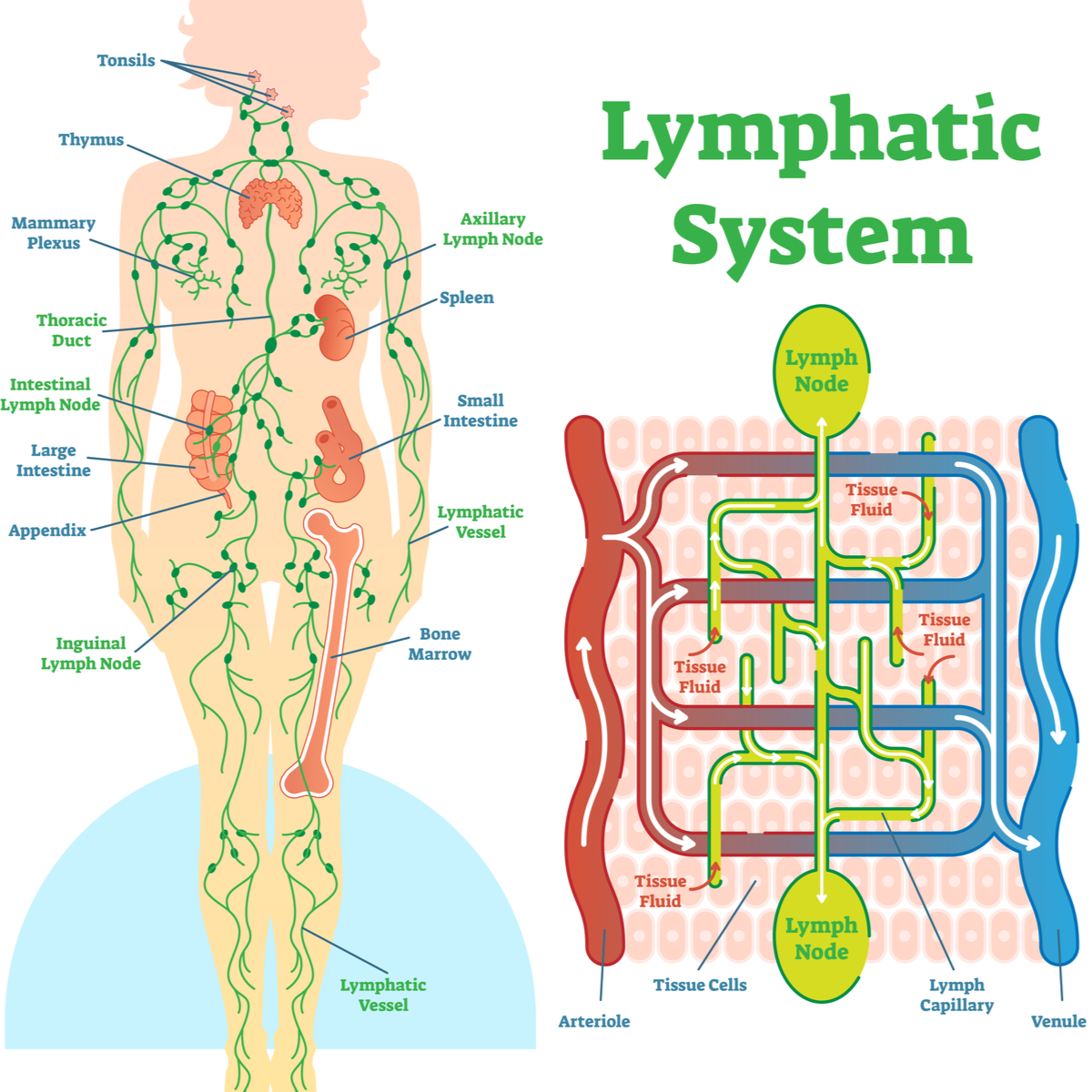How Manual Lymphatic Drainage (MLD) improves the wound healing process.
Nov 30, 2022
Manual Lymph Drainage (MLD) and how integrating it into your patient's post op recovery, can improve wound healing and optimise their scarring process.
In my almost 20 years of working with post op patients, I’ve seen first hand how MLD supports and accelerates the healing process. And that includes improving and optimising the outcome of scars. There are several factors that contribute to perfect wound healing:
- A healthy body before surgery is a definite bonus. Someone who exercises and has a healthy and nutritious diet that includes plenty of protein, vitamins and minerals generally heals much better.
- Wearing the correct post op compression helps any dissected tissues knit together better and it limits the amount of tissue fluid/swelling after surgery.
- Manual Lymph Drainage to remove swelling more quickly. Post Op swelling contains dead cells that if left in the tissues can disrupt wound healing and may cause infection which will ultimately mean poor scarring.
While numbers 1 & 2 are important, they should be a matter of course. Most surgeons I know will recommend their patients don’t drink or smoke and stipulate they improve their overall general health at least 3 months before their surgery. And the majority recommend wearing medical compression.
However, although there are now lots of surgeons who recommend MLD to their patients, many surgeons still don’t know how beneficial integrating Manual Lymphatic Drainage into the acute postop recovery phase is in optimising and accelerating their patients healing process and therefore scarring. So, as an experienced MLD therapist working with post cosmetic and plastic surgery patients, this is WHY I recommend it to anyone having a surgical procedure and now train other therapists in the benefits MLD has in postop recovery process.

The Lymphatic System is little understood by many and certainly isn’t often considered during surgery. However, this amazing body system plays a vital role in maintaining body fluid equilibrium, it forms part of your immune system and keeps your skin and body tissues healthy and is a key component in the wound healing process.
It is a network of tiny vessels and nodes that work together in conjunction with your venous system. In everyday life you have fluid that filters out of the vein walls into the surrounding tissues. This fluid contains blood cells, hormones, fat cells and various proteins. The lymphatic system’s job is to pick up that fluid from the tissues and transport it to lymph nodes which work like filtration stations to filter out any damaging cells, like viruses and bacteria. The ‘cleansed’ fluid goes back into the lymphatic system, and eventually spills back into your venous system at your collar bone. It’s this continual process that keeps your skin and tissues healthy.
However, if something happens to your body that creates more fluid in the tissues, like the body’s natural response to surgery when inflammation (part of the wound healing process) causes swelling, the transport capacity of the lymphatic system becomes overwhelmed and swelling builds up. If the fluid lingers and isn’t being removed from the tissues all those ‘dead’ cells can cause havoc and impair wound healing.
Although your extremely clever body’s response to surgery is a natural response, surgery is not a natural trauma. So the lymphatic system is not prepared for the sudden onset of swelling. And unlike the venous circulatory system which has the heart continually pumping blood around the body, the lymphatic system relies upon muscle movement to encourage fluid into the lymph vessels, then flow of that fluid through those vessels to create a muscular impulse within the lymph chambers to propel the fluid onwards.
However, when you’re lying on the operating table, not moving, lymph drainage efficiency is dramatically reduced. Added to this, the surgeon will sever many superficial lymphatics while performing his surgery, adding to the reduced fluid drainage. During surgery your body is reacting to the trauma by producing swelling. And production of swelling is greater than the draining capacity of the lymphatics, resulting in what we all know as postoperative swelling.
So how does post op swelling affect wound healing and scarring? As you might imagine, following surgery, there will be a lot of dead blood cells in the swelling fluid, along with other cellular debris. If the lymphatic system can move the fluid to the lymph nodes, the lymph nodes will do their job and clean up the fluid, then the lymphatic system can continue doing it’s job of keeping your skin and tissues healthy. However if that fluid lingers, it can become stagnant and the normal wound healing process is compromised, making you more susceptible to infection (your lymphatic system forms part of your immune system. If it can’t send lymphocytes - immune cells - to the area that is affected by some invading bacteria, infection will occur) impeding and compromising the wound healing process.
Long story short, lingering swelling affects wound healing and therefore the scarring process. The best way to reduce and remove that swelling more quickly is by supporting the functioning of the lymphatic system by doing Manual Lymphatic Drainage.
If you're someone having a plastic surgery procedure and would like to avail of the services I provide for postop patients, then please send me a WhatsApp message to +447762 386896
If you're a therapist and you'd like to learn more about the training I provide for therapists working with postop patients, please drop me an email to [email protected]
Or check out my training HERE
